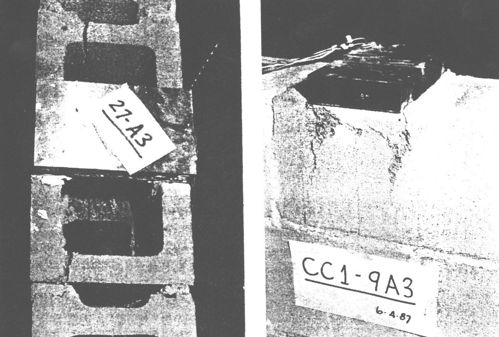Junyi Yi[1] and Nigel G. Shrive2
- Ph. D. Candidate, Civil Engineering Department, The University of Calgary, T2N 1N4, AB. Email: jyi@ucalgary.ca
- Killam Professor, Civil Engineering Department, The University of Calgary, T2N 1N4, AB. Email: shrive@ucalgary.ca
ABSTRACT
3-D finite element models have been constructed for plain and bond-beamed hollow concrete masonry walls, capable of simulating their structural behaviour when subjected to concentric and eccentric concentrated loading. The models utilized the smeared crack method for predicting cracking under load. The hollow block units, mortar, grout and bond-beam blocks of the walls were modeled separately. Shell elements were used to model the hollow concrete blocks and mortar, and solid elements were used to model the grout and bond-beam blocks. Multiple-point constraints were used between the shell and solid elements. Geometric and material non-linearity as well as damage due to progressive cracking are taken into account in the models. The models predicted failure modes and loads generally in excellent agreement with those observed in the small number of available experiments. The failure mechanism is by progressive web splitting of the hollow concrete units in the region beneath the load, followed by spalling of face-shells or crushing of mortar. For walls with bond-beams, grout strength only influences the ultimate capacity of the walls marginally, if crushing immediately beneath the steel loading plate is not critical. When the eccentricity is increased, the models predicted a similar failure mechanism but lower failure loads. Comparisons with available experimental results were made, and failure mechanisms explored.
Keywords: 3D, finite element model, plain, bond-beamed, hollow masonry wall, concentrated load, concentric, eccentric
LBWALL01



